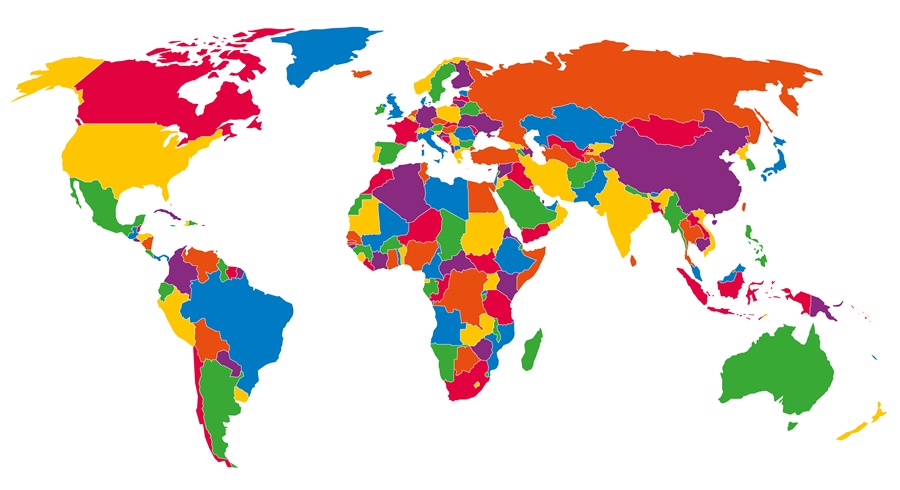
A primarily geographically descriptive trademark (not to be confused with a geographically deceptively misdescriptive trademark) is only entitled to registration with the United States Patent and Trademark Office (USPTO) on the Supplemental Register, unless it has become distinctive of the products or services listed in the trademark application. If it has become distinctive, then it would be eligible for registration on the Principal Register. I invite you to review my blog post titled “Supplemental Register vs. Principal Register – What is the Difference?” so that you understand the many important differences between the two registers and the rights afforded by each one.
Is My Trademark Primarily Geographically Descriptive?
How do you know if your trademark is primarily geographically descriptive? Well, the USPTO asks the following three questions to determine whether a trademark is primarily geographically descriptive or not:
- Is the primary significance of the mark a generally known geographic location?
- Do the products or services originate in the place identified in the mark?
- Would purchasers likely believe that the products or services originate in the geographic place identified in the mark?
If the answer to all three questions is “yes,” then the USPTO will issue a trademark office action refusing registration of your trademark on the Principal Register on the basis that it’s primarily geographically descriptive.
Here are Three Examples
Let’s say you were thinking about applying to federally register the name THE LOS ANGELES STEAKHOUSE for a steakhouse located in Los Angeles, California. Would the USPTO find your trademark to be primarily geographically descriptive? With regard to the first question, Los Angeles is unquestionably a generally known geographic location. Second, the steakhouse is physically located in Los Angeles. And, third, purchasers would likely believe that the steakhouse is actually located in Los Angeles since there are many restaurants (including steakhouses) located throughout the Los Angeles metropolitan area. Therefore, THE LOS ANGELES STEAKHOUSE is primarily geographically descriptive when used in connection with a steakhouse located in Los Angeles, CA.
Another example of a primarily geographically descriptive trademark would be MILAN FASHION for shoes that are manufactured in Milan, Italy. Why? First, Milan is a generally known geographic location. Second, the shoes actually come from Milan. And, third, consumers are likely to believe that the shoes originate in Milan because Milan is widely recognized as one of the fashion capitals of the world. As such, MILAN FASHION would be considered primarily geographically descriptive and would be ineligible for registration on the Principal Register if used in connection with the advertising and sale of shoes that are manufactured in Milan, Italy.
Now, what if we changed the trademark in the first example to THE SHOOTING STAR LOS ANGELES STEAKHOUSE and the trademark in the second example to SOFT KITTEN MILAN FASHION? Although both of these marks still incorporate a geographic location (Los Angeles and Milan) and a geographically descriptive phrase (“Los Angeles Steakhouse” and “Milan Fashion”), they are no longer primarily geographically descriptive. This is because the trademarks now include non-generic and non-descriptive words which make them inherently distinctive and eligible for registration on the Principal Register rather than the Supplemental Register (albeit with a disclaimer of LOS ANGELES STEAKHOUSE and MILAN FASHION).
How Do I Address a Primarily Geographically Descriptive Rejection?
If the examining attorney rejects your trademark application because your mark is primarily geographically descriptive, don’t panic. There are a number of ways in which to attempt to overcome the refusal:
- If you believe your trademark isn’t primarily geographically descriptive, you have the option of presenting evidence and arguments to try to convince the examining attorney to withdraw the rejection. If you’re able to, then the examining attorney will approve your application and your trademark will be published for opposition.
- If you’ve been continuously using your trademark for at least the previous five years, you can assert a claim of acquired distinctiveness under what is generally referred to as Section 2(f). If the examining attorney accepts your 2(f) claim, your application will be approved and your trademark will be published for opposition.
- If your trademark application was filed under Section 1(a) (use in commerce) or under Section 44(e) (foreign registration), you may amend your trademark application to seek registration of your mark on the Supplemental Register. On the other hand, if your application was filed under Section 1(b) (intent to use), then you will first need to file an Amendment to Allege Use before requesting amendment to the Supplemental Register. Because trademarks that will be registered on the Supplemental Register aren’t published for opposition, the USPTO will issue the Certificate of Registration soon after you amend to the Supplemental Register.
Need to Deal With a Geographically Descriptive Trademark Rejection?
I’m experienced US trademark attorney Morris Turek. If you’ve received an office action indicating that your trademark is being refused registration because the examining attorney believes it’s primarily geographically descriptive, please feel free to contact me for a no-cost, no-obligation consultation. You can call me at (314) 749-4059, send an email to morris@yourtrademarkattorney.com, or simply complete the contact form located below. I look forward to speaking with you soon.
